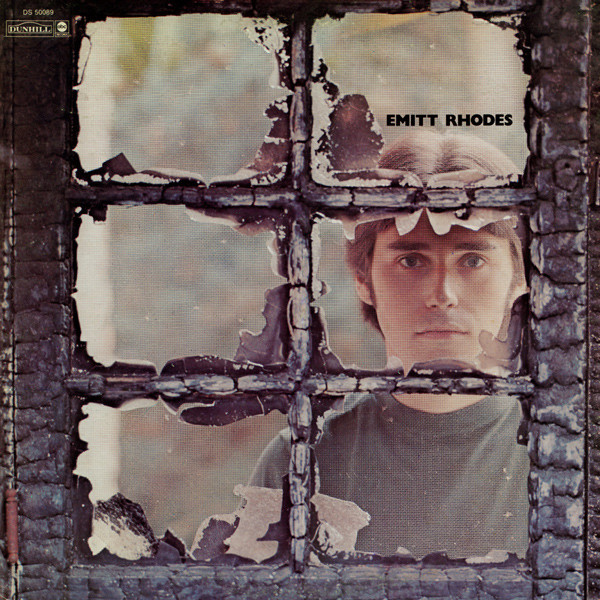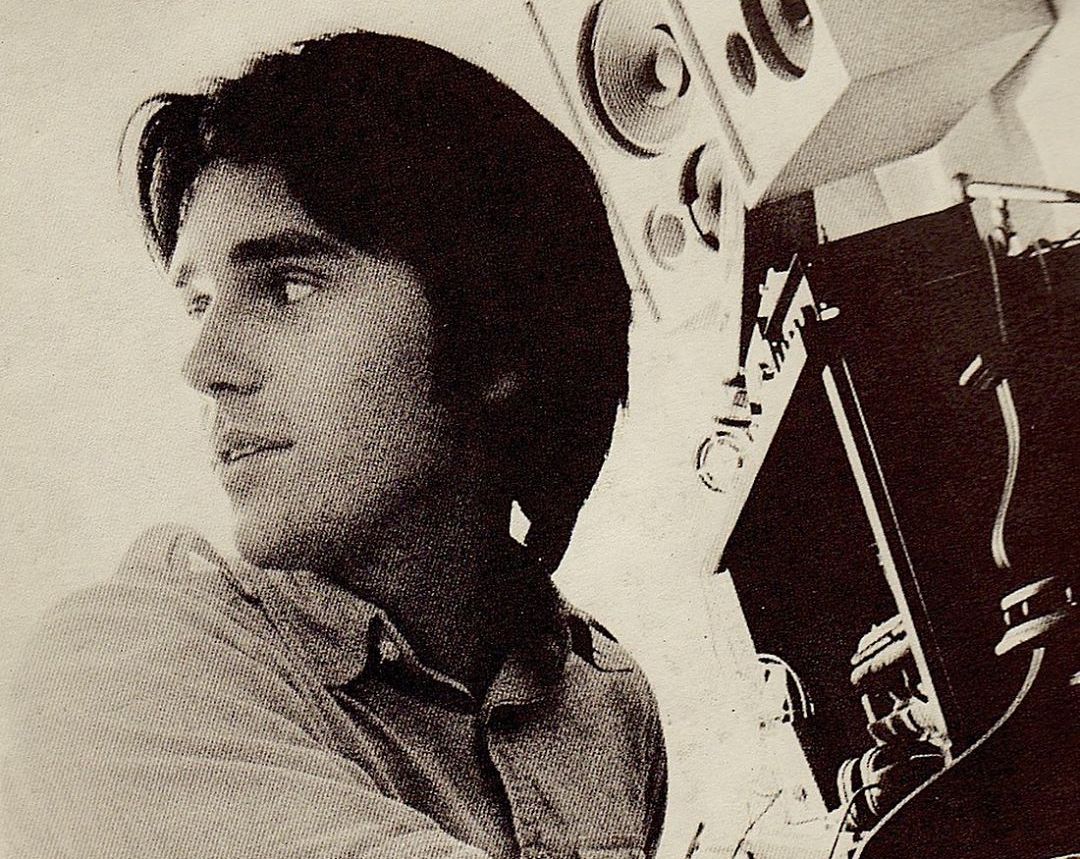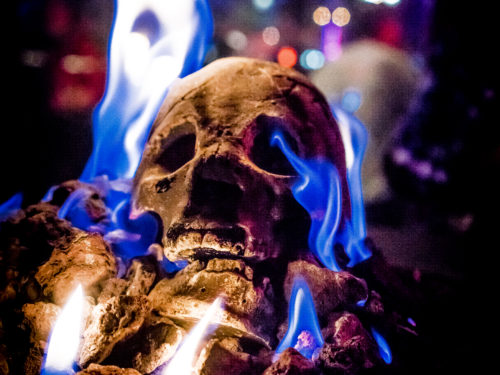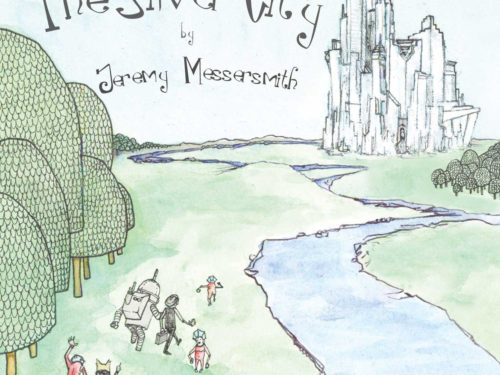Rhodes was dubbed the “One Man Beatles” before a series of setbacks ended his run of classic 1970s solo albums for decades
When Emitt Rhodes passed peacefully away on July 19, 2020, he left behind a grief-stricken cult following, a musical canon so rich that it suffered none for its brevity, and a life story that was equal parts mysterious, fascinating, and frustrating. Emitt Rhodes entered the music scene at the age of 14 and by 19 was a solo artist writing and producing all of his own work. At 23, he left the music scene for over four decades. Rhodes was frequently called the “One-Man Beatles” for his robust songwriting and musical skills. However, Rhodes’ style reflected far more than just The Beatles. The defining quality of his brief but intense recording career is how seamlessly Rhodes represents almost every different niche and facet of 1960s pop and rock music. As one man, he managed to capture the broad expanse of a single musical moment in time over the course of four solo records, a feat that makes his canon essential listening both for veterans of ’60s music and for those looking for an excellent introduction to the sonic atmosphere of the period. Emitt Rhodes created four masterpieces before his 24th birthday, making the frequent overlooking of his work particularly baffling.
Emitt Rhodes had the great misfortune of being a musician in Hawthorne, California, in 1964. By that time, a band of three brothers, their cousin, and a neighbor calling themselves The Beach Boys had become the city’s darlings, leaving pretty much any other group of aspiring musicians in the town scrambling for scraps. One of those groups was The Emerals (with the ‘d’ deliberately dropped), with a 14-year-old Emitt Rhodes on drums. Over the course of a year, the group had a contract dispute, a reconciliation, lineup shifts, and a name change to The Palace Guard. Most famous for their song “Falling Sugar,” which was featured on Nuggets: Original Artyfacts From the First Psychedelic Era, the band found some early success when Casey Kasem invited them to perform on the local TV show Shebang. The band’s recording debut was in 1965 supporting Don Grady from My Three Sons on his single “Little People.” When “Falling Sugar” became a minor hit in Los Angeles in 1966, Hollywood’s The Hullabaloo club hired the group as their house band. According to EmittRhodesMusic.net, “there, Emitt really got a chance to polish his skills as a drummer. Occasionally, the band would even let him come out from behind his drum kit to sing a dead on rendition of [The Beatles’] ‘Michelle.’”
Later that year, Rhodes left The Palace Guard to form his own four-piece band, which would become The Merry-Go-Round. At this time, Rhodes left the drum kit and picked up a guitar, showing the beginnings of his prodigious talent as a multi-instrumentalist. “I learned how to play guitar because it was easier to carry around,” he would later joke. But he had started writing his own songs and founded The Merry-Go-Round because he needed a band to perform them. Their only album, 1967’s The Merry-Go-Round, was rushed out by A&M Records after their first single, “Live” (also featured on Nuggets), shot to No. 1 in L.A. Rhodes has a writing credit on 11 of the 12 songs featured on the record. The Nuggets liner notes say the group “went two-for-two when their second single, ‘You’re A Very Lovely Woman,’ also hit the top spot in L.A. But subsequent singles, though showing Rhodes’ rapid maturation, didn’t sell as well. Relationships in the band quickly became frayed, and after several lineup changes, The Merry-Go-Round split up in early ’69.” Rhodes, at age 19, would now embark on his legacy-defining solo run.
Following his experiences with groups, Rhodes decided his solo career would be just that — he chose to be his own studio band, producer, engineer, and everything in between. Brian Wilson had the sandbox, Bob Dylan and The Band had the basement at Big Pink, and Emitt Rhodes had a shed at his parents’ house. “I bought myself an Ampex four-track — it looked like a washing machine with big black knobs — [and] I put it in a little shed my father had built behind the garage, and went for it.”

Released on December 20, 1970, Rhodes initially wanted to call his self-titled album Homecooking in reference to his recording it all at home. He even wanted to have a decorative banner declaring “Recorded at Home” on the initial Dunhill Records LP release. However, the union rules at the time dictated that any recording released on a major label was required to be recorded in a “proper” studio, so Dunhill chose not to advertise that this was a home recording and instead called the album Emitt Rhodes.
“When I recorded Emitt Rhodes, I was basically investing in myself,” Rhodes said in a 2015 Mojo magazine interview with Paul Myers. “That was kinda how I saw it. I spent any money that I made from making the records with the record company to buy the equipment that I used to make my own records.” The album was given a considerable amount of intrigue through its sonic similarity to The Beatles, specifically Paul McCartney, with some radio DJs going as far as to imply or even outright say it was a new Beatles record. Rhodes did not mind the comparisons, later saying, “[i]t was really flattering. Those guys were my idols.” Ironically, given all the Fab Four comparisons and the theories that he was McCartney’s alter ego, Rhodes and McCartney both released entirely self-created, self-titled albums almost simultaneously, with McCartney’s first solo album also arriving in 1970.
Both critically and popularly, Emitt Rhodes was a success. It reached No. 29 on the Billboard charts and the single “Fresh As A Daisy” rose to No. 54. Billboard called Rhodes “one of the finest artists on the music scene today” and later declared it one of the decade’s best albums. All of this acclaim culminated on February 9, 1971, when Rhodes played the Troubadour. However, as would become an unfortunate hallmark of Rhodes’ story, he was unlucky enough to have his Troubadour performance strike the same night as a large earthquake in the Los Angeles area. Billboard tried to capitalize on the unfortunate coincidence a few days later, running an ad declaring, “That wasn’t an earthquake, that was Emitt Rhodes opening at the Troubadour!”
Emitt Rhodes is a spectacular album, including what may be considered the holy trinity of Rhodes songs, or at least among his most popular — the opener “With My Face On the Floor,” “Somebody Made For Me,” and “Promises I’ve Made.” Much like “Fresh As A Daisy,” these songs manage to blend driving baroque pop and proto-power pop in rich, layered bursts that leave one in awe of how it is just one man behind every little flourish and backing vocal. He paved the way for groups like Big Star and The Raspberries, leaving one to wonder what more Rhodes could have done had he continued his career into the power pop era. Every song on the record has something different to offer, revealing new textures with each new hook. Rhodes sways effortlessly from darker, rock-inclined tracks like “Long Time No See” to very gentle ones like “Lullaby,” the closest he ever really comes to embodying the sensibilities that came to typify the singer-songwriter boom of the time. He exhibits a keen ear for melody construction on songs like “Live Till You Die” and “You Take the Dark Out of the Night” and fills every song to the brim. If there is one record to define Emitt Rhodes, his self-titled album is the one.
Technically though, the first solo Rhodes record is The American Dream (1970). The album is an oddity in some respects. It comprises songs Rhodes wrote and recorded between 1967 and 1969 as a means of fulfilling a contract with A&M Records. But A&M released it in 1970 with no input from Rhodes. This is the one outlier of his one-man production style, as A&M added various studio embellishments to the demos, many of which Rhodes did not necessarily approve of. This would be the first major blow to Rhodes’ career. A&M released the record to try and capitalize upon the success of his singles on the local charts, but it was released at the same time as Emitt Rhodes, meaning that he had two of his own albums competing against one another. Rhodes maintained this profiteering decision by A&M was the deathblow to his career. “It definitely hurt sales,” he later reflected, “because people went out to buy the record they heard on the radio, and they ended up buying The American Dream.”
Although it is not the record Rhodes intended and did what was likely irreparable harm to his career, The American Dream still holds some exceptional work. Listening through it, Rhodes’ creative development in the span of those two years is on full display. He proves himself an incredibly adept songwriter with “Someone Died” and “The Man He Was,” which tell robust stories that would be just as compelling in narrative or lyrical form. With his chameleon-like vocals, Rhodes shows a capacity to fully transform his voice to take on the character of each song and to shift between wildly different styles and genres. On “Pardon Me,” Rhodes gives one of his most Beatles-esque performances, singing with a gentle lilt that has some hidden power behind it, before adopting the dripping bluegrass twang of “Textile Factory.” One could almost believe Rhodes were from the South when he drawls through lines like “not a single one of us has ever learned how to read.” The American Dream is a complex record to wrangle with simply because while it is excellent, there is a certain unsettling line of thought about where Rhodes’ career could have gone had it been released at almost any other time.
Rhodes’ next release was 1971’s Mirror. The album saw him eschew some of the pop sensibilities of his first two releases for a heavier rock sound. Electric guitars are featured more prominently than before on songs like the psych-leaning title track, “Birthday Lady,” the lusty “My Love Is Strong,” and one of the few Rhodes songs captured on film in the ’70s, “Really Wanted You.” In “Medley: Bubble Gum the Blues/I’m a Cruiser,” Rhodes manages to blend the pop sound of his first albums with the blues-based guitar rock he would continue to explore, once again demonstrating his ability to balance disparate styles within a single song. Rhodes’ songwriting also takes a darker tone on Mirror, especially in “Love Will Stone You” and “Golden Child of God.” However, Mirror’s real crowning achievement is how Rhodes learns to pull some of his punches. “Better Side of Life” and “Side We Seldom Show” are excellent examples of Rhodes using his guitar work sparingly. In the moments he unleashes a few notes, they leave a greater impact. It tantalizes the listener and leaves them wanting more, which could be considered a major theme of Rhodes’ entire canon, both through his own creative choices and the uncontrollable forces that impacted him.
Farewell to Paradise (1973) sees Rhodes further changing with the times. The album is a far cry from his earlier work that was readily, and understandably, mistaken for Beatles tracks. Rhodes ushers in a new set of influences that create a wholly different sound from his past records. The album’s opener, “Warm Self Sacrifice,” sounds like a heftier Dion Dimucci-type song, the guitar and percussion of “See No Evil” drum up tastes of Santana, and with the inclusion of rich horns and more groove and funk, Rhodes evokes a sound not wholly dissimilar from what groups like Traffic were doing at the time with songs like “Drawn to Me” and “Shoot the Moon.” A few tracks are reminiscent of his earliest work, like the piano-driven “Only Lovers Decide” and the country-tinged “Blue Horizon,” but most of the album continues along the rock path he embarked on with Mirror. The most notable exception is “Trust Once More,” a song with a noticeable weariness. As he sings about misplaced trust, the song becomes a pressing revelation of where Rhodes was at the time. In hindsight, it becomes painfully clear that this story of broken trust was art imitating life. Just as Rhodes was beginning to chart new territory and explore new sonic oceans, Farewell to Paradise would prove to be a prescient title for the album.
Mirror only charted at No. 182, and Farewell to Paradise failed to chart at all. One may wonder why Dunhill did nothing to promote the albums, but the reasons are rather clear. After the release of Mirror and Farewell to Paradise, Dunhill sued Rhodes, who was writing, performing, producing, and engineering every album himself, for failing to provide them with two albums a year. “It was a Herculean task and it was impossible for me to do,” Rhodes later reflected in Mojo regarding his decision to leave recording behind. “I just burned out. I just quivered and lay down on the ground in the fetal position. And that was that,” Rhodes admitted. In 2001, he told Stephen Hyden, “There were lawsuits and lawyers and I wasn’t having any fun anymore. That’s it. Simple as that. I worked really hard and there was no reward.”
After Farewell To Paradise, Rhodes stopped recording, but he did not leave music entirely. He spent the next several decades working behind the scenes, giving his producing and engineering skills to other recording artists. It was not until 2016 that Rhodes would return to recording his own music, with Rainbow Ends, his first album in 43 years and his last. The record feels like a celebration of Rhodes, featuring musicians who had been long-time admirers including Richard Thompson, Aimee Mann, Susanna Hoffs, Nels Cline, and Jon Brion. “The songs feel like they’ve been around forever,” Rhodes told The New York Times in an interview about the record. “They’re eternal.”
Rainbow Ends (2016) is a beautiful final statement and a fascinating document of his own processing of the events of the past four decades. In the first two tracks, Rhodes sings of lingering resentments, of being “led along like a dog on a leash,” and how he would’ve done things differently if he knew then what he knows now. However justified it may be, Rhodes does not dwell on the past. He allows himself a moment to express his frustration and then drives right into a three-song stretch that is on par with his best work. “Isn’t It So” is peak Rhodes, and “The Wall Between Us” and “Someone Else” follow with such bursting energy that it feels as if Rhodes was storing it up over the last 43 years. It is perhaps the single most solid continuous stretch of tracks on any of his albums. He clearly revels in being back behind the microphone with what may be his most patently “fun” song in “Put Some Rhythm To It,” where he sings about his first love, making music. As he comes to the album’s twilight, he presents one of his most beautiful songs, “It’s All Behind Us Now.” In this moment, it feels as if Rhodes is maybe coming to terms with the fate he suffered at the hands of his record labels and his contentment with the person he became and the career he enjoyed in the alternative. As a reflection on his life and the path it took, Rainbow Ends becomes a stunning testament and a poignant rumination, especially as his recording career ends with the words, “Always chasing rainbow ends / Head up in the clouds / Thought my dreams would never end / But my eyes, they’re open now.”
Perhaps the most tremendous blow dealt to Emitt Rhodes’ legacy is that he was constantly in the right place at the wrong time, his work overshadowed at nearly every turn. If not for coming from Hawthorne at the same time as The Beach Boys, would any of Rhodes’ pre-solo bands have garnered more attention? If not for the inevitable Beatles comparisons, would Rhodes and his own distinct take on the style have gained more traction? Or, without all the Beatles comparisons, would Rhodes’ first solo album have received anywhere near the attention it did? In his time as an active recording artist, the cards were so stacked against him — with the earthquakes and label disputes — that his story often borders on a tragic comedy. Even so, he managed to create a body of work so rich that it remains endlessly fascinating and refreshing in spite of its brevity. In a New York Times obituary of Rhodes, Ben Sisario discusses a particularly telling moment from the 2009 documentary The One Man Beatles: “Rhodes, now burly and white-bearded, joked about his obscurity with a touch of bitterness. Strangers on the street, he said, sometimes thanked him for his music. ‘They think I look like the guy from the Grateful Dead.’” For a young musician as promising as Rhodes, it would be hard to predict the unfortunate ways his talent would be obscured by artists who caught the breaks he didn’t. However, it would have been even more challenging to fathom the appreciation that would develop for his work by the end of his own lifetime and continues to grow among new listeners discovering his music. As Rhodes wrote in “‘Til The Day After,” the closing track of The American Dream, “no one can see past tomorrow.” While he could not predict the trajectory of his career, he managed a bit of sonic prediction in the ways he pushed the boundaries of pop music as a one man band in a shed behind his parents’ garage.
Stay up to date with all things Split Tooth Media and follow Breanna on Twitter
(Split Tooth may earn a commission from purchases made through affiliate links on our site.)




